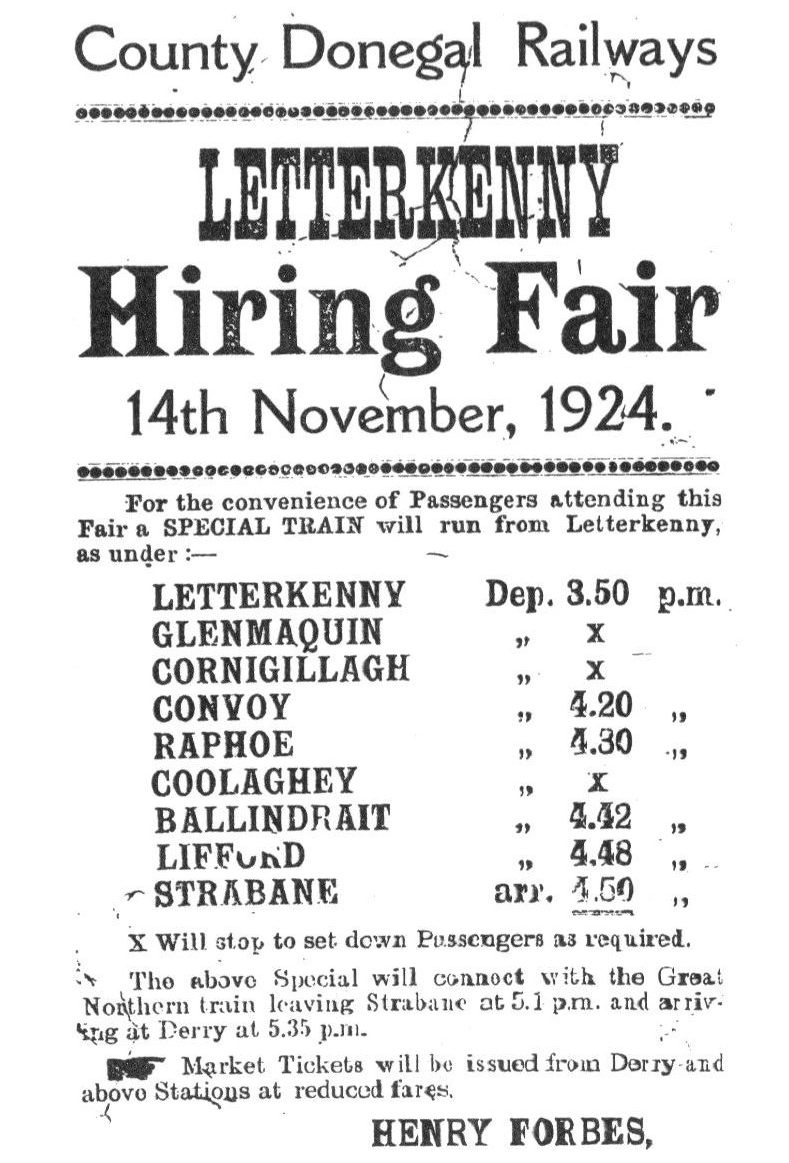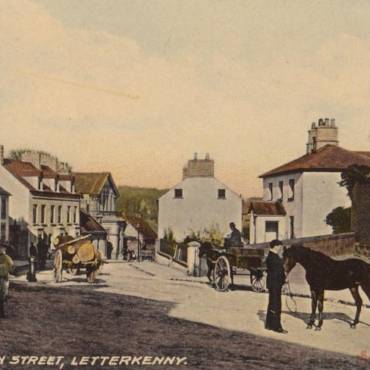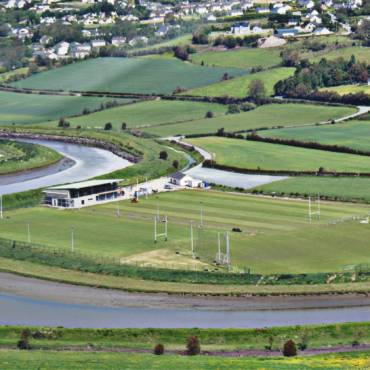The Hiring Fair
A key component of the evolution of the market town of Letterkenny was the growth in popularity of the Hiring Fair, or ‘Rabble Days’ as they were also known. Having been a part of the English and Scottish way of life since the fourteenth century, many of the large farmers who had been brought to Ulster in the Plantation made use of the Hiring Fairs to secure cheap labour for their farms. The fairs tended to be held in towns that lay between areas of poor land (where the labourers came from) and areas of good farming land (where labour was required). For this reason, Letterkenny was an ideal location, situated as it is between the mountainous land of west Donegal and the rich fertile land located in the Laggan area to the east. Letterkenny, as a result, acted as the gateway through which the labourers could pass to find work. Strabane and Derry were also chosen for this reason in the northwest with smaller fairs held in Limavady, Cookstown, Ballybofey and Omagh.
The Hiring Fairs took place twice a year, on May 12th (the beginning of the harvest season) and November 12th (the preparation of the ground and planting) with more workers usually taken on for the May to November term because of the heavier summer workload.
The Fair Day was a busy affair as people crowded the streets looking to do business. The actual hiring of labourers was done early in the morning, giving everyone involved the chance to either tend to business or enjoy the lighter side of the fair. After the hiring of the labourers, the farmers would adjourn to the local alehouses before heading back to the farms in the evenings. The labourers were then free to attend the many stalls and amusements throughout the Main Street.
The labourers were mostly children, typically from the Glenties and Gweedore areas who would either be sent by their parents or accompanied to the fair to look for work. Usually coming from large families, sending children to the fairs ensured one less mouth to feed as well as generating income from their six-month terms of work. Upon arriving at the fair, the children would stand around with a parcel of belongings under their arms to show that they were available for hiring.
Today at the Market Square in Letterkenny, a monument commemorates the Hiring Fair Days showing children awaiting employment. While it is true that some hiring took place at the Market Square, typically the main hiring took place at the top of the Main Street at the corner of Speer’s Lane, then an area known as ‘The Diamond’ (owing to the convergence of four streets – Main Street, Ramelton Road, Asylum Road and Speer’s Lane).
By the 1930s, Irish farming underwent major social and economic changes that gradually ended the use of the Hiring Fair. The mechanization of farms resulted in less need for labourers while from the labourer’s point of view, unemployment benefits from the state began in the 1930s, which broke down the centuries old tradition of the six-month hiring term, as people now wanted to be employed on a weekly basis so they could claim unemployment benefits for periods of days and weeks when there was no farm work to be done. At government level, the School Attendance Act 1926 in the new Irish Free State meant that younger workers could not travel to fairs anymore, depriving the fair of its chief assets. Even though hiring continued into the 1950s, the fairs gradually ceased as by then, new jobs in the urban areas attracted farm workers into the expanding towns, gradually reducing the need for skilled workers on farms.
The Fair Day in Letterkenny would have been a great spectacle with people arriving from all over the county, not just for the hiring but also for the ‘craic’ in the pubs, stalls and amusements. It was a busy day for the merchants and traders of the town who benefitted greatly from the added business. In the end, the Rabble Days were consigned to history and became just a memory but there is no doubting the impact they had on the growth of the town’s fortunes in the nineteenth century.



